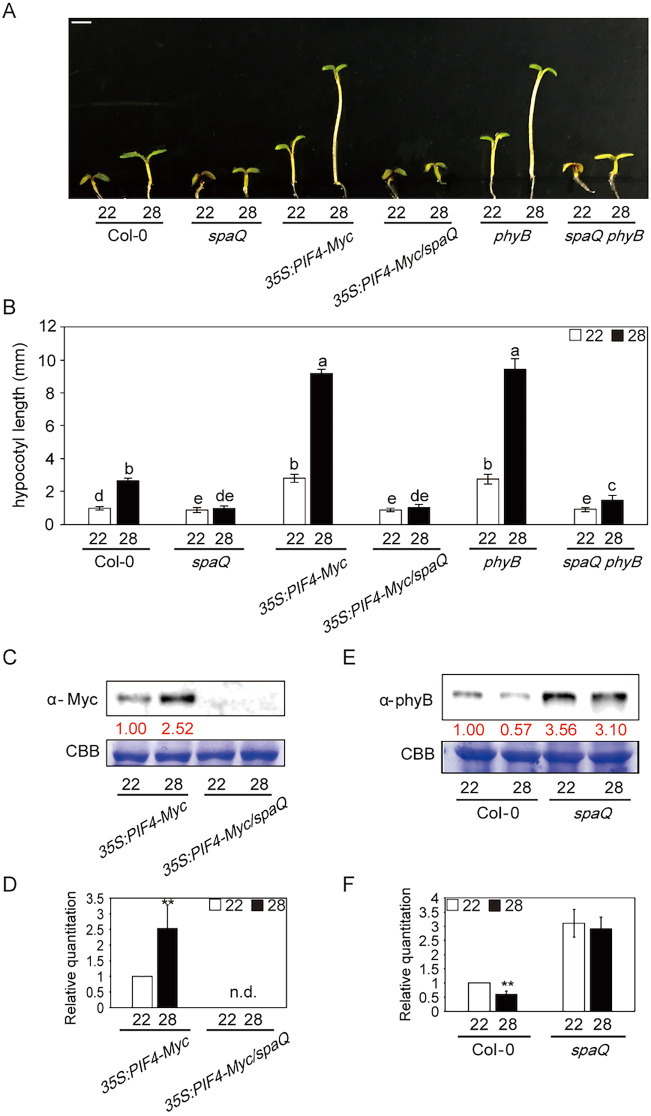Fig. 3.
SPAs are necessary for controlling the phyB-PIF4 module at high ambient temperature. (A) Photograph shows the seedling phenotypes of Col-0, spaQ, 35S:PIF4-Myc, 35S:PIF4-Myc/spaQ, phyB and spaQ phyB plants at 22 or 28°C. Seedlings were grown for 2 days in continuous white light at 22°C and then either kept at 22°C or transferred to 28°C for an additional 4 days before being photographed. More than 10 seedlings were measured for each experiment, and the experiment was repeated three times for one-way ANOVA with Tukey's HSD test. Scale bar: 2 mm. (B) Bar graph shows the hypocotyl lengths for seedlings grown in the conditions described in A. The letters a-e indicate statistically significant differences between means of hypocotyl lengths (P<0.05) based on one-way ANOVA with Tukey's HSD test. Error bars indicate the s.d. (n=3). (C) Western blot shows PIF4-Myc protein level from either 35S:PIF4-Myc or 35S:PIF4-Myc/spaQ whole seedling grown for 5 days at 22°C and transferred to 22 or 28°C for 4 h. PIF4-Myc was detected using Myc antibody. Red numbers indicate the quantitation value from anti-Myc detection divided by Coomassie Blue staining intensity. (D) Bar graph shows the relative amount of PIF4-myc (n=3). n.d., not detectable. (E) Western blot shows the phyB protein level from either Col-0 or spaQ mutant at 22 or 28°C. (F) Bar graph shows the relative amount of phyB (n=3). Student's unpaired t-test: **P<0.01.

